Carpobrotus Edulis
Carpobrotus Edulis is a native fruit/vegetable from South Africa, where it has been consumed by ethnic groups since centuries. This is a crawling evergreen plant with two subspecies. Succulent leaves and fruits are used in making sweet delicacies and curries. It has bright, yellow colored flowers which set it apart from the other species. These trees can survive many years as they are low maintenance but extremely useful to mankind in many ways.
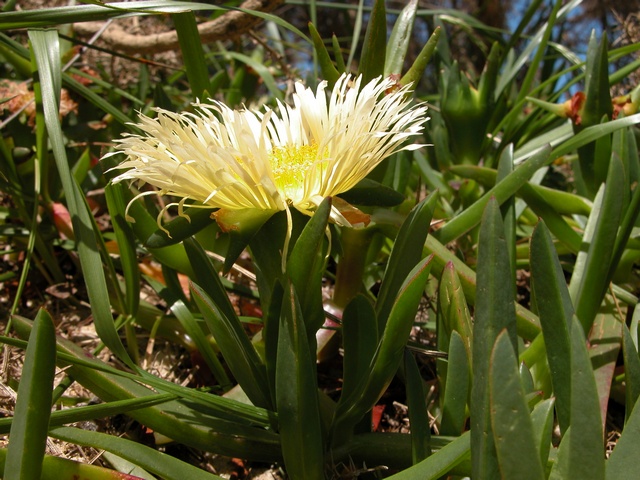
Carpobrotus Edulis
Table Of Content
Common Name
It is known by different names like Hottentot Fig, Highway Ice Plant, Ice plant and Pigface. Sour Fig is the name by which it is known in South Africa.
Description
The physical features of these plants are:
Flowers: It blooms in the months of August, September and October, in shades of yellow blending with light pink. It has a diameter between 100 and 150 mm. The flowers are extremely flamboyant with several stamens that are bordered by stigma appearing like star fish.
Fruits: Edible fruits of almost 35 mm diameter grow on these plants, which attain a yellowish tinge on maturity. These pulpy fruits are fashioned like a gyrating top that grow on thick stalks.
Stems: It has juicy stems that rise upward in a curling manner. It forms a dense cover on the ground.
Leaves: Leaves are also juicy, which closely gathers along the succulent stem. In their younger stage, they are yellowish or greenish but over time they turn reddish.
Aroma: After ripening, the fruits emit a pleasant fragrance.
Taste: On eating the fresh fruits, you would be able to feel their salty and tangy taste, which is quite dominant.
Distribution
It is prevalent in inland slopes and coastal regions, stretching from Namaqualand till the Eastern Cape. It covers Northern, Eastern and Western Cape in its distributional range.
Plantation
The plant grows well in full sun. It can grow in different kind of soils, if they are well-drained. Being tolerant to drought, it can grow in sandy soils, sand dunes, flat ground, slightly brackish soil as well as rough patch of gardens.
Make sure that there is ample room for it to grow and spread over walls and boundaries. Very less water is required in winter.
This plant can be propagated via root and stem cuttings during summer or springs. Seeds are easily dispersed by the carriers like animals which germinate fast.
Health Benefits
For a refreshed feeling, plant extracts of juice can be added to bath water.
Side Effects
No such side effects have been found but over consumption might lead to complications.
Carpobrotus Edulis During Pregnancy
Natives used to consume it for healthy pregnancy but its implications in modern times are not yet researched. This is why consulting a physician before consuming it during pregnancy can help avert problems.
Is Carpobrotus Edulis Edible?
It produces edible fruits and leaves that have been consumed since ages as suggested by historical findings. Fruits alone can be eaten by drawing out the pulp with mouth from within, after slicing the base.
Buy
Several online stores sell these plants at reasonable prices. You can also visit your nearby nursery to buy these.
Is Carpobrotus Edulis Invasive?
This plant has been recognized as an invasive species in California, Mediterranean countries and Australia. This is a result of its escape from cultivated areas to those places where they are removed by hand or mechanically. Ice Plants have destroyed ecology to a great extent by erasing a lot of original vegetation as they are like thick ground mats.
Uses of Carpobrotus Edulis
Culinary Uses
- In the preparation of jams, pulps of the fruits are extensively used.
- Curries can also be made with the fruit.
Medicinal Uses
- The sap obtained from the leaves is antiseptic which can heal wounds, insect bites and stings by applying it on the skin.
- The juice from the leaves also has astringent properties which helps soothe the skin.
- Respiratory blocks can be treated by inhaling the steam after boiling the leaves.
- It can be used for making skin ointments which can effectively treat psoriasis and other skin ailments.
- Sun burns might as well be treated using extracts of this plant.
- A traditional remedy of TB was the intake of a mixture made of water, olive oil, honey and C.Edulis leaves’ juice.
- Natives in Eastern Cape use it as remedies for disorders like diphtheria and diabetes.
- In ancient times Khoikhoi consumed it for successful pregnancy and delivery. They also applied the parts of the plant on the head of the infants with the belief that they will grow stronger.
- For constipation, an age old remedy was to consume the fruit followed with salty water. A known laxative is syrup made from it.
- As the leaves are antiseptic, their juice can be mingled in water and gargled to alleviate sore throat and mouth infections.
- Leaves are very useful component of this plant that has been used for addressing cystic ailments and pulmonary disorders.
Other Uses
- Due to its showy features, this plant had been planted in gardens and sold via nurseries.
- The plant can effectively tighten soil and act as an embankment stabilizer apart from being draught-resistant, which is why they are cultivated.
- They can also help in stopping forest fires from spreading, which is another reason why they are grown.
Recipe
Among the popular recipes prepared with the fruits is that of a sour jam and Sour fig preserve.
Pictures
The plant species has been represented in these pictures.
References:
http://en.wikipedia.org/wiki/Carpobrotus_edulis
https://pfaf.org/user/Plant.aspx?LatinName=Carpobrotus+edulis
http://www.cal-ipc.org/ip/management/ipcw/pages/detailreport.cfm@usernumber=25&surveynumber=182.php
https://www.cabidigitallibrary.org/doi/10.1079/cabicompendium.10648
- by Jaysmita Sarkar
- January 31st 2013

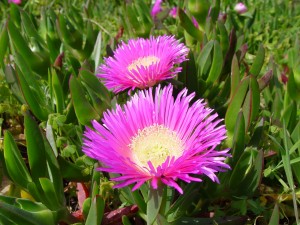
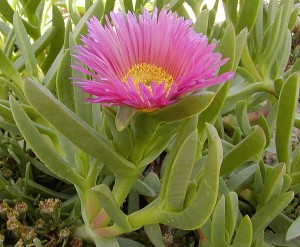
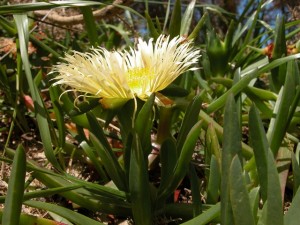
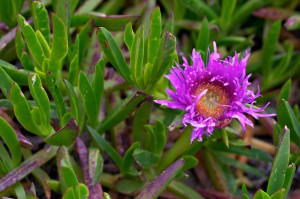


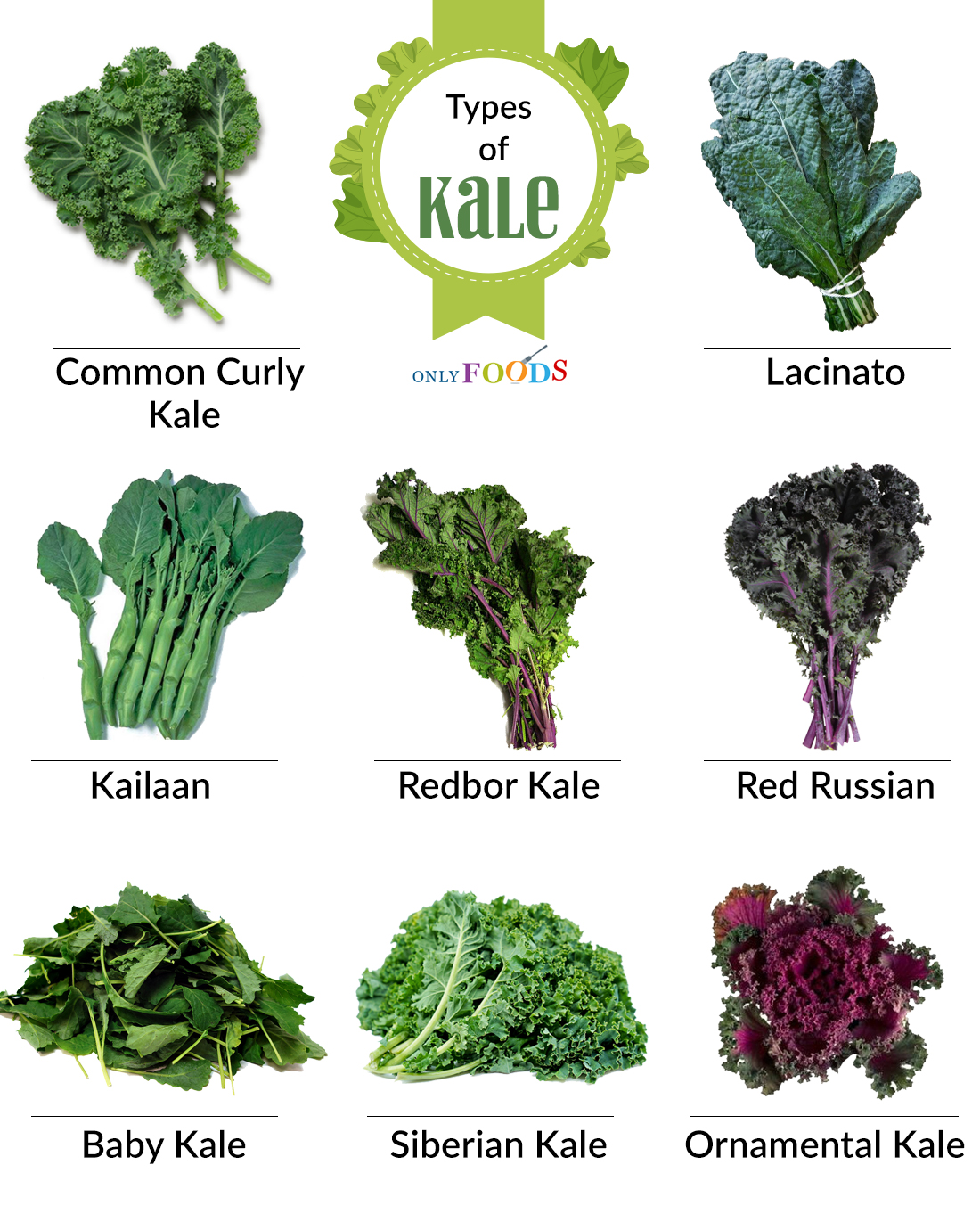
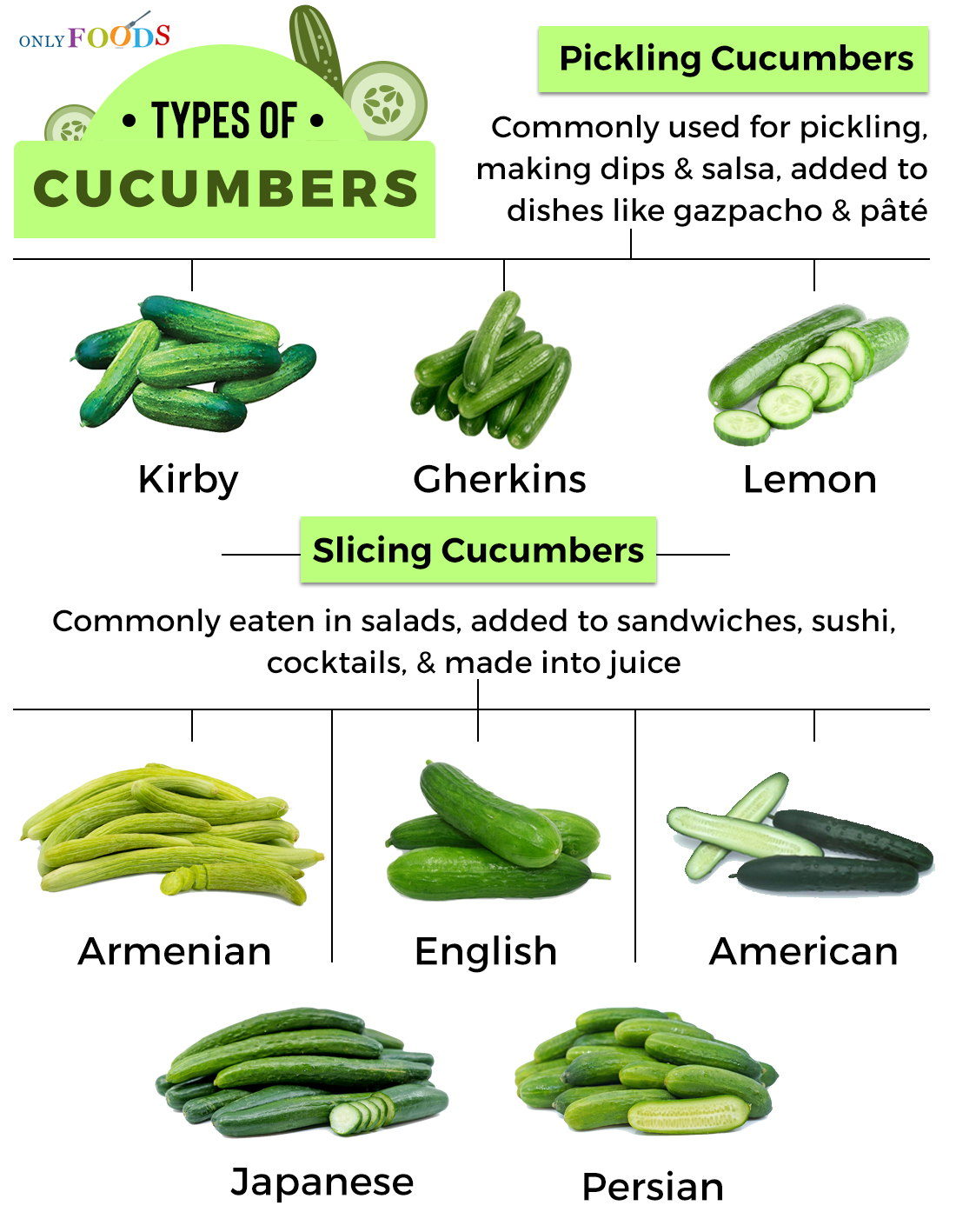















Leave a Reply